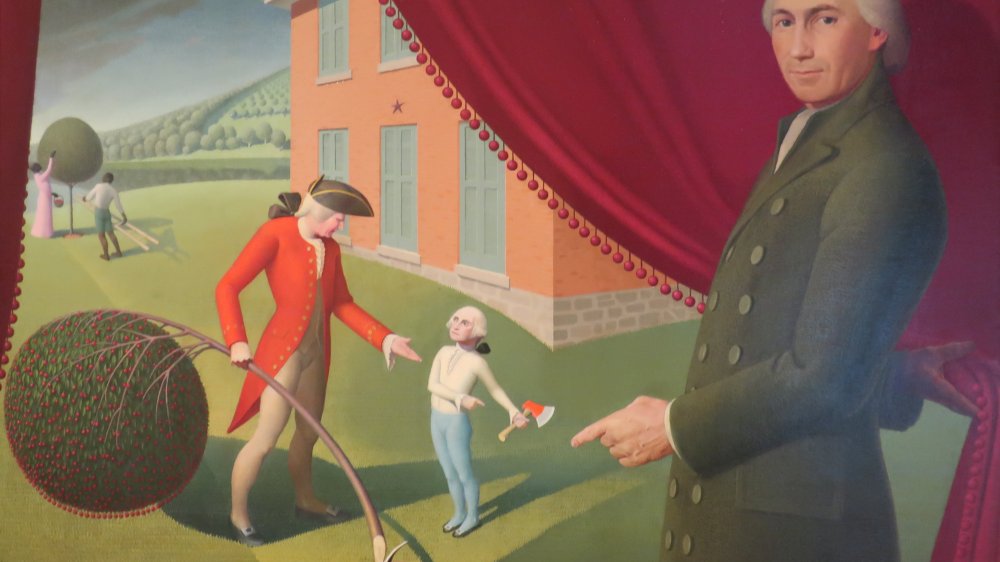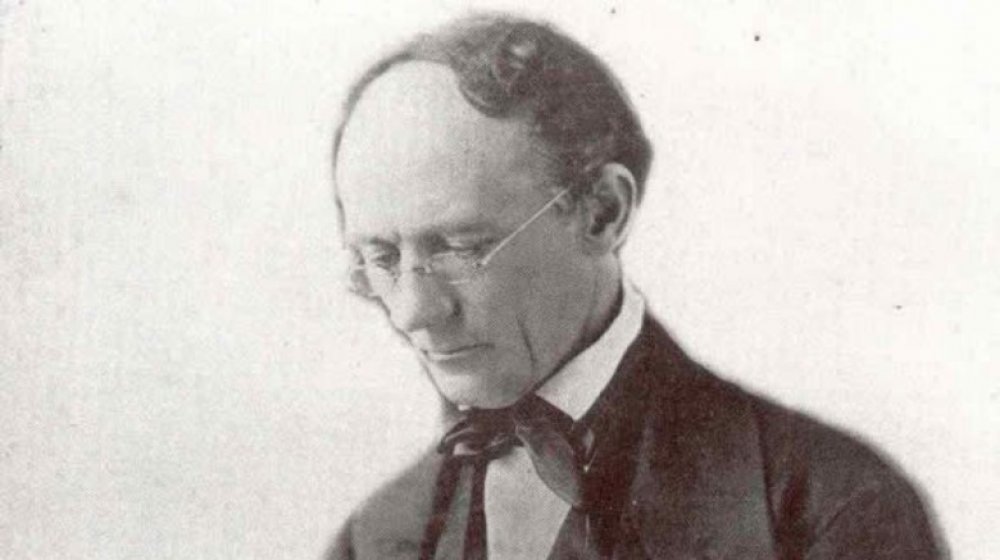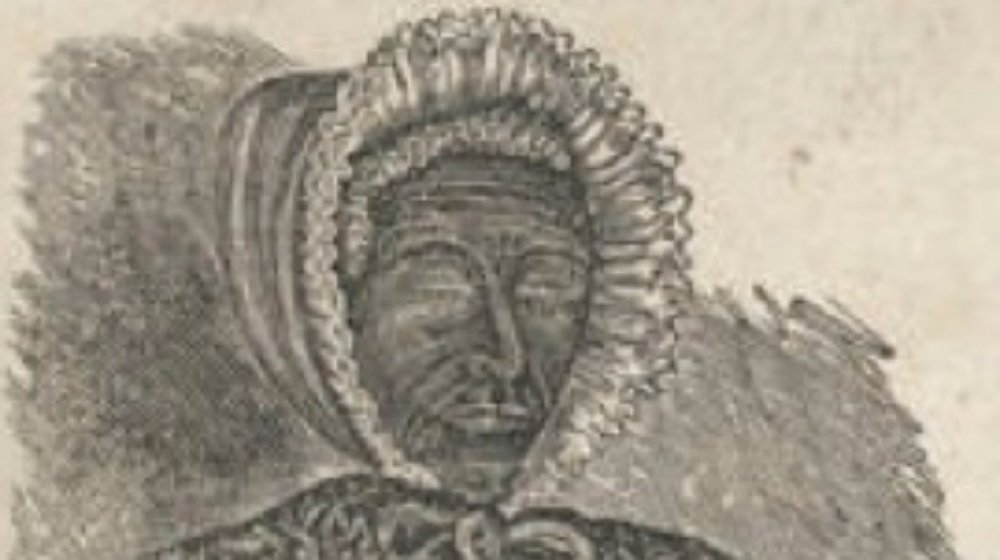The Truth About George Washington And The Cherry Tree
The first piece of trivia American children learn about George Washington is almost always that he was the first President of the United States. This is usually followed by the adorable and heartwarming story of how as a child, George Washington chopped down a cherry tree and when his angry father confronted him, little George replied, per MountVernon, "I cannot tell a lie ... I did cut it with my hatchet," thus illustrating the importance of bravely telling the truth and owning up to one's mistakes. Even if we can suspend disbelief about the behavior of a six-year-old with a hatchet in 1738, the story still seems a little too good to be true. It is.
The fable originated with "one of Washington's first biographers, an itinerant minister and bookseller named Mason Locke Weems." When Washington died in 1799, Weems immediately saw an opportunity to fulfill the American public's desire to learn more about the founding father, reportedly telling a publisher, "Washington you know is gone! Millions are gaping to read something about him ... My plan! I give his history, sufficiently minute ... I then go on to show that his unparalleled rise and elevation were due to his Great Virtues." Weems's pitch worked, and his book The Life of Washington was a hit upon its publication in 1800. The infamous cherry tree story? That wasn't included until the fifth edition of the book, published in 1806.
Lying about telling the truth
According to the Mount Vernon website, Pastor Weems was "a Federalist admirer of order and self-discipline [who] wanted to present Washington as the perfect role model, especially for young Americans." The general public knew about Washington's accomplishments as a Revolutionary War general and as an American Founding Father and the first President of the United States, but knew little about his childhood, particularly his relationship with his father, who died when Washington was just 11 years old. "Weems knew what the public wanted to read" and by inventing heroic stories that imply "that Washington's public greatness was due to his private virtues," he succeeded in framing Washington as a role model and in selling books by giving the people information they craved. Ironically, he told lies in order to create a myth that served to illustrate the importance of telling the truth.
The cherry tree story was given further credence by William Holmes McGuffey (pictured above), "a Presbyterian minister and college professor who was passionate about teaching morality and religion to children." McGuffey wrote a series of elementary school textbooks, McGuffey's Readers, which were published in 1836 and stayed in print for nearly 100 years. His version of young George Washington and his cherry tree "appeared in his Eclectic Second Reader for almost 20 years, including the German-language edition from 1854." It reportedly included more formal language and "more deference to his father's authority" while keeping the same storyline and moral conclusion.
Did P.T. Barnum owe his career to the cherry tree myth?
Perhaps the most disturbing example of the enduring appeal of the Washington-cherry tree myth belongs to eventual circus titan P.T. Barnum, who started his career in the 1830s by creating a sideshow attraction featuring Joice Heth (pictured above). Heth was an enslaved woman purchased by Barnum for the purpose of presenting her as "the slave who had raised George Washington," which "would have made her 161 years old." Part of Heth's show included the cherry tree story; as Mount Vernon points out, "Heth was credible because she was telling stories that people already knew." By that time, someone hearing stories about the childhood of George Washington would be waiting and expecting to hear about the cherry tree and his inability to tell a lie.
According to the Lost Museum Archive, Heth died of natural causes in 1836; an autopsy proved her to be no more than 80 years old, which just adds another lie to the layered series of lies that has kept the lie about George Washington and his cherry tree fresh in American minds for centuries. Mount Vernon points out that "presidents from William McKinley and Theodore Roosevelt to Richard Nixon, George W. Bush, and Barack Obama have been featured in cherry-tree themed cartoons." We still hold out hope that presidents will simply take responsibility for their actions and eschew lies — even lies about telling the truth.


